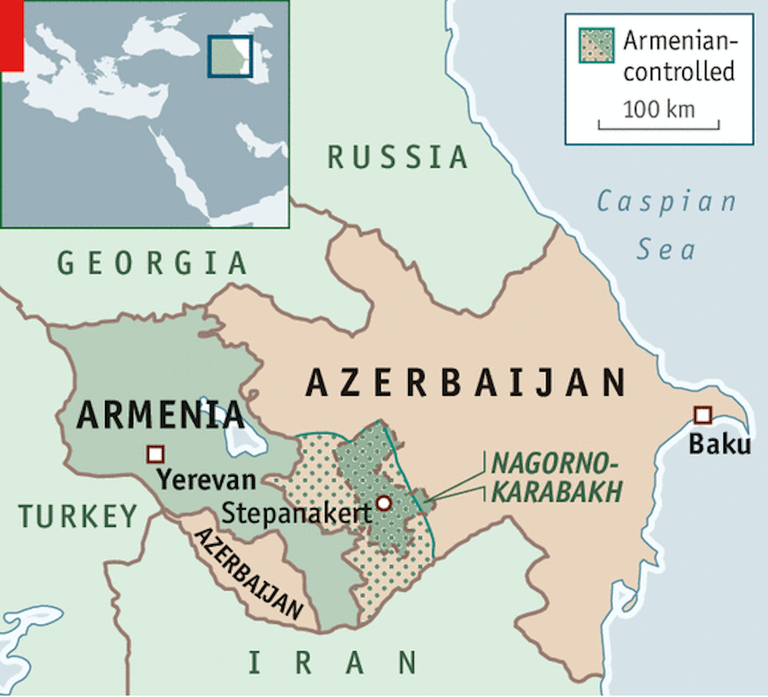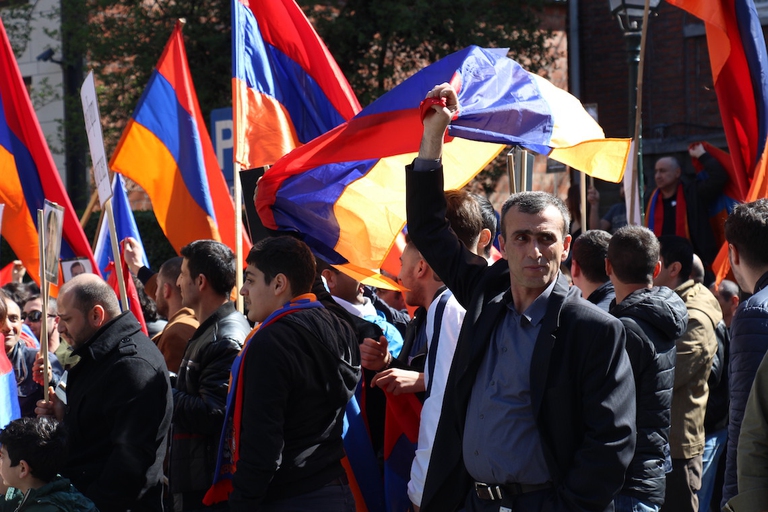
As per tradition after 12 years India held Mahakumbh, the world’s largest spiritual congregation that has been attracting pilgrims from across the globe.
Located in the South-Caucasus, the mountainous republic of Nagorno Karabakh is a presidential democracy inhabited by ethnic Armenians. In 1923, Stalin handed the territory over to Azerbaijan following a divide and rule policy put into place to weaken the national aspirations of minority groups. After the fall of the Soviet Union in 1991, a war broke
Located in the South-Caucasus, the mountainous republic of Nagorno Karabakh is a presidential democracy inhabited by ethnic Armenians. In 1923, Stalin handed the territory over to Azerbaijan following a divide and rule policy put into place to weaken the national aspirations of minority groups. After the fall of the Soviet Union in 1991, a war broke out between Nagorno Karabakh and the Azeris, culminating in a ceasefire in 1994. On the 1st of April this year open hostilities picked up again. “There were five days of fierce fighting,” says Bedo Demirdjian, representative of the European Armenian Federation for Justice and Democracy, “the fiercest fighting since the ceasefire of 1994”.
The death of 20,000
After the dissolution of the USSR it didn’t take long for Christian Armenians in Nagorno Karabakh to organise themselves and stand against Muslim Azeris who were engaging in pogroms, a term that denotes ethnic or religious persecution, against them. They declared themselves independent and formed the Nagorno Karabakh Republic, also known as Artsakh.
This led to a full-scale war that caused the death of 20,000 and displacement of 800,000 people, and ended with the 1994 ceasefire. No peace agreement has ever been signed. Even though Azerbaijan has not exercised power in Nagorno Karabakh in the last 25 years, the international community has still not recognised the territory’s sovereign status.
Tensions in the region have increased in the last couple of years and many ceasefire violations have been documented; all have been without consequence. This state of inaction on the side of the international community has encouraged the resumption of battle.
On the evening of the 1st of April, Azeri forces endorsed by Turkish President Recep Tayyip Erdoğan came in with military helicopters, tanks, caliber weapons and drones to restore the arbitrarily established borders, which don’t respect the people’s right to self-determination.
Armenians responded to the full blown attacks and many casualties were reported. According to the Armenian Defence Ministry, 97 soldiers, civilians and volunteers have lost their lives on the Armenian side. On the Azeri side, 31 soldiers and 4 civilians have been reported dead, however these figures have not been updated since the 5th of April. Demirdjian recounts that when Azeris launched the full-scale attacks there was an initial wave of surprise but Armenians were quick to take back positions lost in the southeast and northeast of Nagorno Karabakh. “The countries have now agreed on a Russian-mediated bilateral ceasefire,” established on the 5th of April. “This is taking us back to square one,” Demirdjian says.
“Azerbaijan initiated the aggression not just against Nagorno Karabakh but also against Armenians. Armenians were the first civilians who were cold-bloodedly shot in Martakert,” according to Demirdjian. Indeed, what has been witnessed in the province Martakert doesn’t seem like a battle only over territory: an elderly Armenian couple was killed and their ears were cut off and some Armenian soldiers were beheaded and mutilated.
“We are standing here in front of the Azeri embassy, like many other Armenian communities around the world,” Demirdjian commented at the protest Armenians held in Brussels on the 10th of April, demanding to be heard by Azerbaijan and the international community.
Armenians are raising their voices in protests in cities all over the world, such as Los Angeles, Brussels, Paris and Yerevan, signing petitions, offering to volunteer on the front line and raising funds to help the families of victims and soldiers. “We want Azerbaijan to stop the aggression. We want them to return to the negotiating table and respect the right to self-determination of Armenians,” concludes Demirdjian. Armenians worldwide are coming together to fight for a common cause: the right of the people of Nagorno Karabakh to govern themselves.
Siamo anche su WhatsApp. Segui il canale ufficiale LifeGate per restare aggiornata, aggiornato sulle ultime notizie e sulle nostre attività.
![]()
Quest'opera è distribuita con Licenza Creative Commons Attribuzione - Non commerciale - Non opere derivate 4.0 Internazionale.
As per tradition after 12 years India held Mahakumbh, the world’s largest spiritual congregation that has been attracting pilgrims from across the globe.
Workers in tea gardens of West Bengal, India, that produces Ctc tea for domestic consumption complain that they have been devoid of basic facilities while political parties make hollow promises during every elections which are never fulfilled.
India is in the middle of the elections, but sadly none of the politicians have uttered a word on man-animal conflict that has been devouring several lives every year.
Manipur, a state in north-east India, is still reeling under the tremors of violence that broke out last year devouring lives and paralyzing the economy.
The government of Tanzania is currently planning to evict more than 80.000 indigenous Maasai people from their ancenstral land
A new UNU-INWEH report on the global bottled water industry reveals the massive scale of this market and the lack of strict quality controls.
Isatou Ceesay founded a social enterprise that is helping to fight plastic pollution and empowering women and young people to gain economic independence.
In 2020, Mihela Hladin made a radical decision that many, in recent times, have probably considered. This is her story, with photos by Matt Audiffret.
The Brazilian government has started evicting illegal gold miners, responsible for the health emergency that has hit the Yanomami people.









